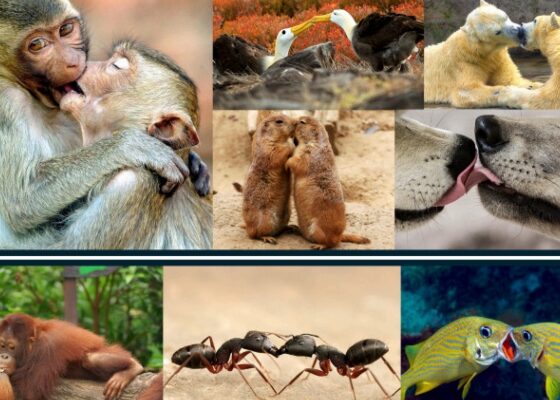The researchers drew their conclusions by integrating the approaches of evolutionary biology and the observation of the relational behavior of current primates.
Berlin, November 20 (DW).- The apesand probably also the neanderthalsI know they kissed a few ago 21 million yearsthey suggested scientists of the Oxford University In a study published yesterday in the journal Evolution and Human Behaviour.
Matilda Brindleco-author and evolutionary biologist of the british universitysays it’s “the first time anyone has taken a broad evolutionary perspective to examine kissing.”
“Our results add to a growing body of studies that highlight the remarkable diversity of sexual behaviors exhibited by our primate cousins,” he adds.
NEW: A study from @OxfordBiology has found that kissing first evolved around 21 million years ago in the common ancestor of humans and other great apes.
The research suggests that humans and Neanderthals likely kissed each other too. pic.twitter.com/CflZcoe8KD
— University of Oxford (@UniofOxford) November 19, 2025
Kisses, an evolutionary enigma
The origin of kisses (sexual or platonic) continues to be the subject of debate, as does the reason why it has endured.
They have long been an evolutionary enigma. Kissing appears to carry high risks, such as transmitting diseases, without obvious reproductive or survival advantages.
Kisses throughout evolution
The researchers defined kissing in their study as “non-aggressive mouth-to-mouth contact that did not involve the transfer of food.”
In a statement from the University of Oxfordthe authors say that kissing is “an ancient behavioral trait in great apes,” appearing in their common ancestor between 16.9 and 21.5 million years ago.

“Kissing was maintained throughout evolution and is still present in most great apes,” they add.
Modern primates also kiss
Stuart West, co-author and professor of evolutionary biology, explains that by integrating evolutionary biology with behavioral data, “we are able to draw informed conclusions about behavioral traits that don’t fossilize, like kissing.”
“This allows us to study social behavior in both modern and extinct species,” he added.
First, the researchers collected data on modern primates that have been observed kissing, including chimpanzees, bonobos, and orangutans.
Next, considering kissing as a “trait,” they assigned it to the primate family tree. By simulating different evolutionary scenarios, they estimated the probability that ancient ancestors also kissed.


Evidence of kissing with Neanderthals
Scientists propose that Neanderthals, who cohabited with the A wise man in Eurasia before disappearing, “they probably also had the habit of kissing.”
“This discovery, associated with previous studies showing that humans and Neanderthals shared oral microbes (through the exchange of saliva) and genetic material, strongly suggests that they kissed,” underlines the university report.

